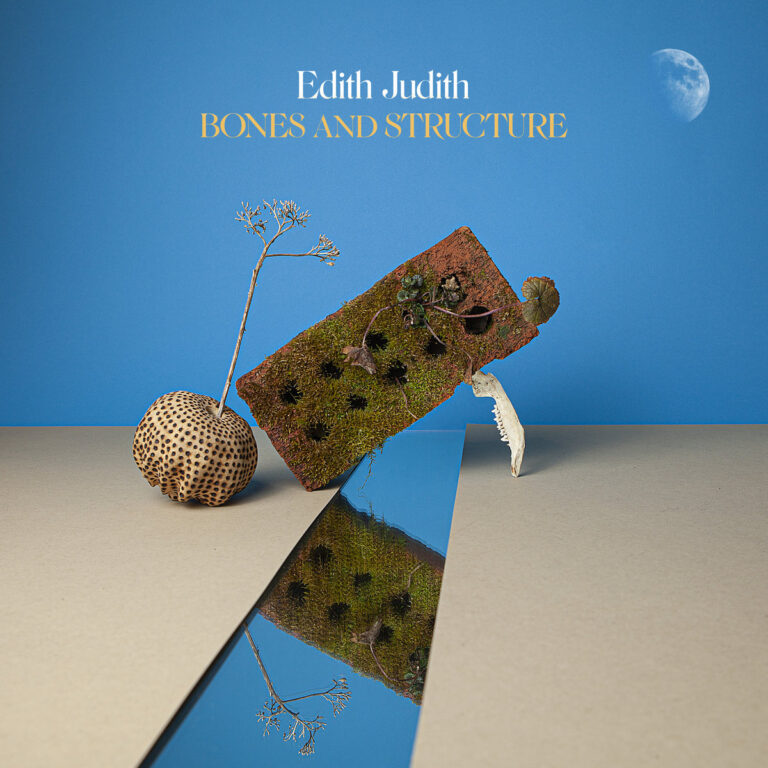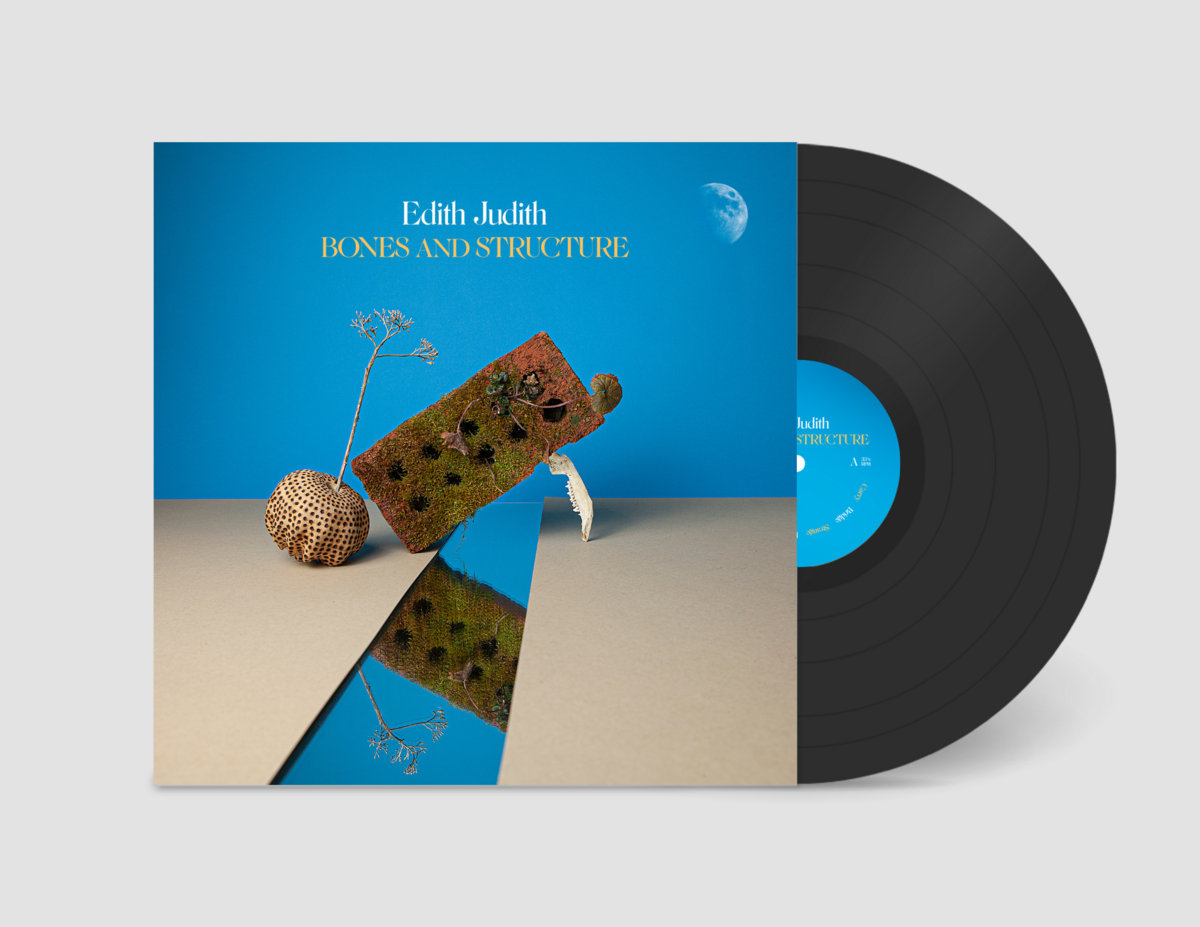“We were in this weird time when you didn’t know what was going on,” says Edith Judith’s Katie Ernst. “Was it good to get a timeout from life? Or were we all gonna die? You can swim in that ambiguity.” Formed during the early phase of the pandemic, the Chicago-based project started when Ernst (Twin Talk, Jason Moran) and partner Dustin Laurenzi (Macie Stewart, Jeff Parker, Bon Iver) were isolating at home together. A collaboration born amid confusion which itself held no clear purpose, though which would eventually lead to an album, Bones and Structure, out this week with Ruination Record Co. Not quite an attempt to confront the unfolding tragedy outside, nor a mere experiment to while away long hours indoors. Or perhaps it was both of these things, the intention so bound up in the moment’s surreal uncertainty that any distinction faded to insignificance.
Ernst and Laurenzi are no strangers to collaboration. Aside from being partners, the pair have long worked together as part of jazz outfit Twin Talk, a project which wears its intimacy in its very name. But Edith Judith served as a vehicle for different sensibilities, the conditions under which it was formed fostering new methods and lines of inquiry. “This was a new frontier,” Ernst says. “We gave ourselves time, we weren’t in a rush, because there was nothing to rush for. So we both had our own time to do our own thing without any compromises or restraints. I trusted that he wasn’t going to add 400 clarinets just for kicks. Everything we added felt important. There was a certain discipline to it.”
This discipline presents itself within the very sound of the songs. A departure from the sprawling improvisation of Twin Talk, Bones and Structure offers an altogether more concise, pop-orientated style, even if its origins started in freewheeling experimentation. Laurenzi would play with various instruments, creating soundscapes which Ernst could study, mould and curate. “We had a very specific routine,” he explains. “I would record something, then I’d pass it along to Katie and she’d make a melody and write lyrics. Then we’d build from that. It was very structured, which makes sense in all that chaos.”
The pair sent some of the resulting tracks to drummer and producer Ben Lumsdaine (Snaarj), and the percussion he added pushed the songs in yet another direction. “What Ben sent back to us was very different from what we expected,” Ernst says. “The songs had more bite, a little more edginess alongside the softness of the original recordings. You could tell he put the same kind of neurotic care into them that we did.” What resulted was a method at once exploratory and mechanical. A process through which the songs passed, changed at each stage as they were gradually hammered into their final form, unbeholden to preconception or expectation as to what that form might be. “We didn’t go into this looking for answers or trying to be sure about anything,” Edith Judith say. “These are love songs and question songs, hopeful songs and sad songs. They’re poems of uncertainty.”
What began as an outlet during the uncertain present of the pandemic became something precious. A way to work through ambiguity without any of the friction or tension that comes with a desired resolution. That Edith Judith takes its name from the couple’s three-legged dog (“a character of great resilience in our lives,” as Ernst says), is telling. Speaking not only to a sense of perseverance in the face of suffering, and making the best of whatever circumstances are dealt, but also the small intimacies that make such survival possible, even beautiful. For the collaboration of the record is built upon intimacy and trust, and through its practise serves to reinforce such virtues. An act of self-perpetuating closeness. Bones and Structure is therefore not so much a record of uncertain times but a lesson in mutuality. A well both to fill and draw from as any one moment dictates. “Bones and structure, two are one,” Ernst sings in opener ‘Carry’, a song about inheritance that could be applied to the songs themselves:
They carry me, I carry them with me
I carry them on
To carry me on, they carry me,
I carry things that will outlast me
We have the honour of sharing Bones and Structure a few days early, so grab you headphones and stream the album in its entirety below:


